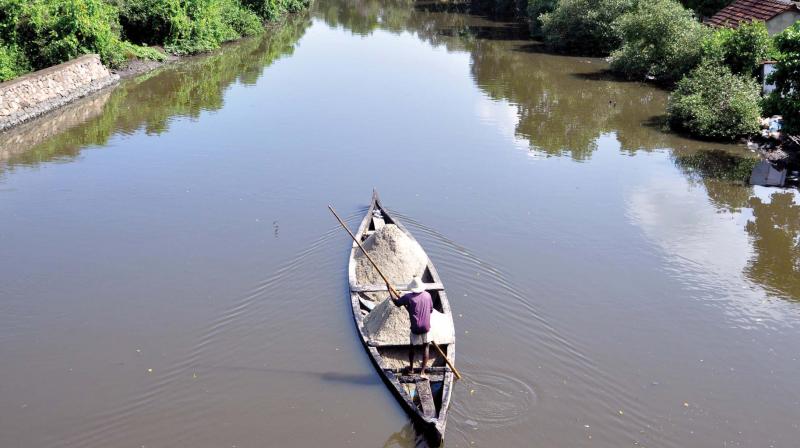Rivers gasp for lifeline

THIRUVANANTHAPURAM: Kerala lags behind in the protection of its 44 rivers all of which originate from the Western Ghats. The rivers, backwaters, streams, canals and other inland water bodies, which are monsoon-fed, shrink into rivulets or dry up during summer due to sand mining and development activities. As the World River Day is observed on the last Sunday of September, experts say that there is no co-ordination among various departments for the protection of our rivers. As per the statistics provided by the Indian meteorological department, the annual rainfall of Kerala is more than double the national average. It receives about 3107 mm as against the national average of 1197 mm.
Kerala has a rich biodiversity and the tropical rainforests are spread across 13 agro-ecological zones based on topography, rainfall distribution, soil and altitude. Nonagenarian Sunderlal Bahuguna, noted Garhwali environmentalist and Chipko movement leader, had said, "it is because of forests alone the rivers are flowing." This is a clarion call to all those who exploit the biodiversity and water resources of the state. Mr N. Badusha, president of the Wayanad Prakriti Samrakshana Samiti, feels that rivers should sustain their flow even during the summer. This is the biggest challenge facing the state as the forest cover is fast depleting in the western ghats.
"Kerala is dependent on agriculture and for that we require abundant rain. If forests disappear, there will not be any rains. The industrial pollution being caused in the Periyar region makes only 40 percent of the rivers fit to flow," said Mr Badusha who has been a silent campaigner for Kabani river since 1984. He demanded that the LDF government should initiate a survey on all the 44 rivers so that the lost biodiversity can be restored. On Sunday, Mr Badusha will hold a campaign in Wayanad to raise awareness on how to protect Kabani river and other rivers in the state.
Mr Purushan Eloor, research co-ordinator with Periyar Anti-Pollution Committee, told DC that none of the departments like forest, revenue, power, minor and major irrigation, pollution control board and agriculture undertake any co-ordinated efforts to address the condition of the rivers in Kerala. He demands that a river basin authority having judicial powers should be formed. This has been a three- decade-old demand which remains unfulfilled. "For the protection of rivers there has to be a judicial authority. All the sewage outlets under the local bodies fall into various rivers due to the lack of primary sewage plants. The government should come out with an action plan on primary treatment of sewage plants," said Mr Purushan Eloor who says that coliform bacteria and heavy metals have polluted the rivers.
The Uttarakhand High Court in March had declared the Ganga, the third largest river in the world, and Yamuna, the largest tributary of Ganga, as living entities, bestowing on them the same legal rights as a person. This is expected to help in efforts to clean the pollution-choked rivers. Until then, New Zealand's Whanganui river was the only one in the world to be granted living entity status. Dr. Latha Anantha of Chalakudy River Protection Committee says such initiatives should be replicated in Kerala to protect its rivers. The economy has developed with city sewage, farming pesticides and industrial effluents freely flowing into waterways despite laws against polluting.
"Now the efforts being taken by the government are only ad hoc. The dams' performance in the state has to be evaluated first as it is the dams that control the water flow into the rivers," said Latha Anantha. She has urged the government to hear the views of the fishermen and people engaged in sand mining along with experts who know more about the local rivers. The district collector can head an expert committee which can form an action plan for the protection of rivers. Our lives have been 'broken from rivers,' she says.
"When the rivers are giving so much of wealth to the people, what do we return to them? It is like give and take, but nothing is being given back. The 978 grama panchyats should act against paddy reclamation and destruction of hilly terrains," added Latha who has been working for the protection of Chalakudy river for over three decades. Though she handed over the river revival plan to former environment minister Jairam Ramesh in 2009, nothing happened due to red-tapism. Eventually, Jairam Ramesh was shunted out to the rural development ministry.

